Artist and teacher George Pratt is featured in an exhibition at the Ringling College Museum of Art in Florida. The show is called “Carnet de Voyage: Maroc,” and it’s based on a sketching trip George took to that fabled land
Gurney: “What's in the exhibit?”
Pratt: “The exhibit has a handful of early drawings done in the early and late 1980s from my wishful thinking about visiting Morocco when I was a student or fresh out of art school. The bulk of the show is new work: There are oil paintings, watercolors, photographs and sketchbooks. On view is also many of the carpets, bowls, daggers, handmade bedouin locks, letters sent from Morocco, old postcards, clothing, etc.”
Even with the amount of work presented the gallery wasn’t large enough to show everything I’ve been working on dealing with Morocco.
Gurney: How did you plan your itinerary? Was each day's and night's location locked down in advance, or did you leave it open?
Pratt: I basically flew by the seat of my pants. I really didn’t plan anything at all except that first Riad in Marrakech. On the way to each destination I would fire up my iPhone and search through Airbnb for another riad, staying only in the old cities rather than outside the walls in the more modern areas. I wanted to immerse myself in the old world sights and sounds.
G: What art supplies did you bring along? What did you leave out of your kit and why?
P: I brought way too much stuff. I had a somewhat large rolling duffle, a small rolling suitcase for my Pochade box, and a heavy backpack. I packed my oils, watercolors, pen and ink, several sketchbooks, and my nice Canon 12D Mark 2 Camera. The pochade box was handmade by Alla Prima Pochade and was their 10 x 12 Bitterroot box. Awesome pochade box. For substrates I had brought Raymar Linen FeatherLite panels. 3 full watercolor setups in case I ran out or lost one. My watercolors are mostly Winsor & Newton with a few Holbein in there as well. Several Arches cold press watercolor blocks of different sizes. The sketchbooks were Moleskine and Fabriano books. Blackwing pencils, dip pens, fountain pens, brush pens, Color Pencils, and Caran D’Ache Neocolor crayons.
How was your mindset different when you switched from sketching to taking photos? How did that switch change the nature of your human connection with the people around you?
I wanted the trip to totally be about painting and drawing, but when I was sketching I felt that I was missing all kinds of things. I had limited time (two months) for the trip and wanted to get in as much as I could. So I began to heavily lean on photography. I began shooting with my Canon and the prime 35mm lens. But the battery pack that I had added to the overall weight of the camera and I finally primarily used my iPhone.
Photography was originally a pretty utilitarian tool for me, a way of shooting reference material — models posing for me. When I took my trip through the Mississippi Delta in the early 1990s The camera became another artistic expression for me. This became more pronounced when I went through my divorce and was trying to hang on to my connection with my children. So I found myself shooting constantly while in Morocco. I think I shot close to 20 or 30,000 images. Insane. I would shoot during the day and then edit at night on my iPad. I would sketch during the day and night as well.
Drawing is certainly a meditation and allows one to settle one’s self down and focus on the communication with the subject, whether that’s a person, or a tree, etc. So the sketching I became more picky about what I would spend that time doing. Whereas the camera allowed me to willy nilly capture imagery. Not that there weren’t times where I slowed down and was choosy about many of the photographs I was taking.
I did a few portrait drawings with a few subjects and that definitely is a more acute interaction with a person, especially given the language barrier. I tend to be a quick sketch person. I lack the patience to sit and noodle. The same goes for my paintings. I draw and paint energetically. It was the way I was taught. There it is — draw it, paint it! Very direct and to the point.
On a 5-hour hike in the Atlas mountains I found myself totally wiped out, tired as all get out. Jon Foster, who was with me for the first three weeks, was wanting to go further, continued up the mountain with Hamid, our guide. I plopped down in the dirt by an interesting tree and said I was done for awhile. They could go on but I was going to draw this tree. So they went on and I focused on the tree with a pencil and my moleskine. And I took my time drawing this tree. It was lovely and a great relaxation. I tried to really capture the small, subtle striations in the bark and the undulating branches, totally aware of the thick and thin line weights working to faithfully replicate the forms, but without resorting to a lot of tonal work. So there were times where I did turn to a sort of meditation, a real observation of a tree, or a building, and they’re some of the better sketches for me. The quick sketches have so much life in them, energy. But these others have a deeper sense of soul, I guess
How did you deal with the language barrier? Did you speak French or Arabic? Any stories about communication challenges?
No real challenges on the language. It could be frustrating at times but not often. Before leaving on the trip I tried to learn a little Moroccan Arabic, but very, very little stuck with me. Luckily there were some who could speak broken English. And if there was too much of a barrier I cold make myself understood with drawings.
A nice encounter communication-wise was during my time in Fez. I was walking through the Souk and passed by one shop that had really cool music playing through a speaker outside. I went in and found a shop packed to the gills with all kinds of artifacts. The owner came over and tried to talk with me but neither of us spoke each other’s language. I got that his name was Omar and motioned about how much I loved the music. We ended up sitting for at least an hour playing music for each other. I ended up going to his shop several times and just hanging out with him for an hour or two, and each time we’d play different tracks for each other. Awesome.
What reaction did your sketching get from kids or women?
Children were fascinated with drawing. In Chefchaouen, the Blue City, I had a little girl come up to me while I was sketching in one of the alleys. She was very curious and not shy at all. She couldn’t speak English, but would point to what I was drawing and then at my sketchbook. I finally handed her the pencil and turned to a new page for her to play on. She drew a fun representation of me and she and I laughed about it.
There were a couple of times I was set up to paint where weirdness happened. The first time was in Fez. I had chosen a spot that overlooked the Casbah and some of the merchants. I had everything set up and had begun painting when a small ground of young boys came over. They seemed interested and were smiling a lot. But then their little ring leader came over and started messing with the knobs on the tripod that my pochade box was mounted. He twisted the knobs and the whole thing collapsed, the pochade box slamming into the cobbles and my jar of turpentine exploded on the stone. I was so pissed off. They ran away with the merchants down below yelling up at them. No painting that day.
The next time was in Chefchaouen and I set up to paint one of the beautiful blue doors. Shortly after I began a gaggle of children, boys and girls, showed up and they began throwing small pebbles at me. This went on for a while. I tried shooing them away but they continued. Finally a merchant came out of his shop and scared them away. He came over and invited me into his shop to have tea. He couldn’t speak English and I couldn’t speak Arabic or French but we got along well. He got me to understand that this photograph he had of a little girl was his daughter and that he had not seen her in quite awhile. I did a drawing of her for him which made him happy. He had a friend come over and we took pictures together. I visited him a couple of times while I was there.
The show is on view through March 22 at the Ringling College Museum of Art in Sarasota, Florida. Link to more info.
Here’s a link to an hour-long video George put together.
And here’s a shorter video that gives you a glimpse of the show.







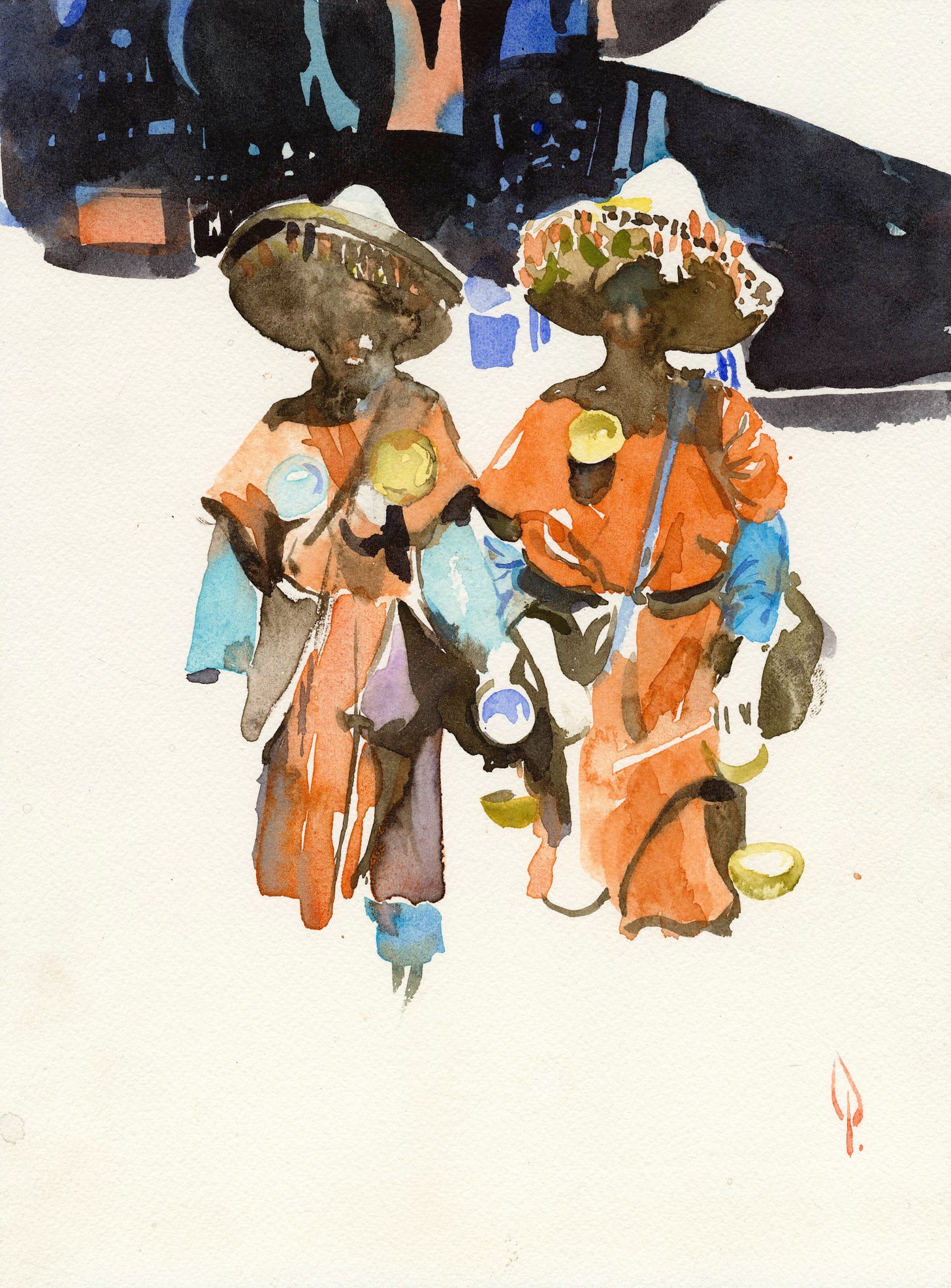
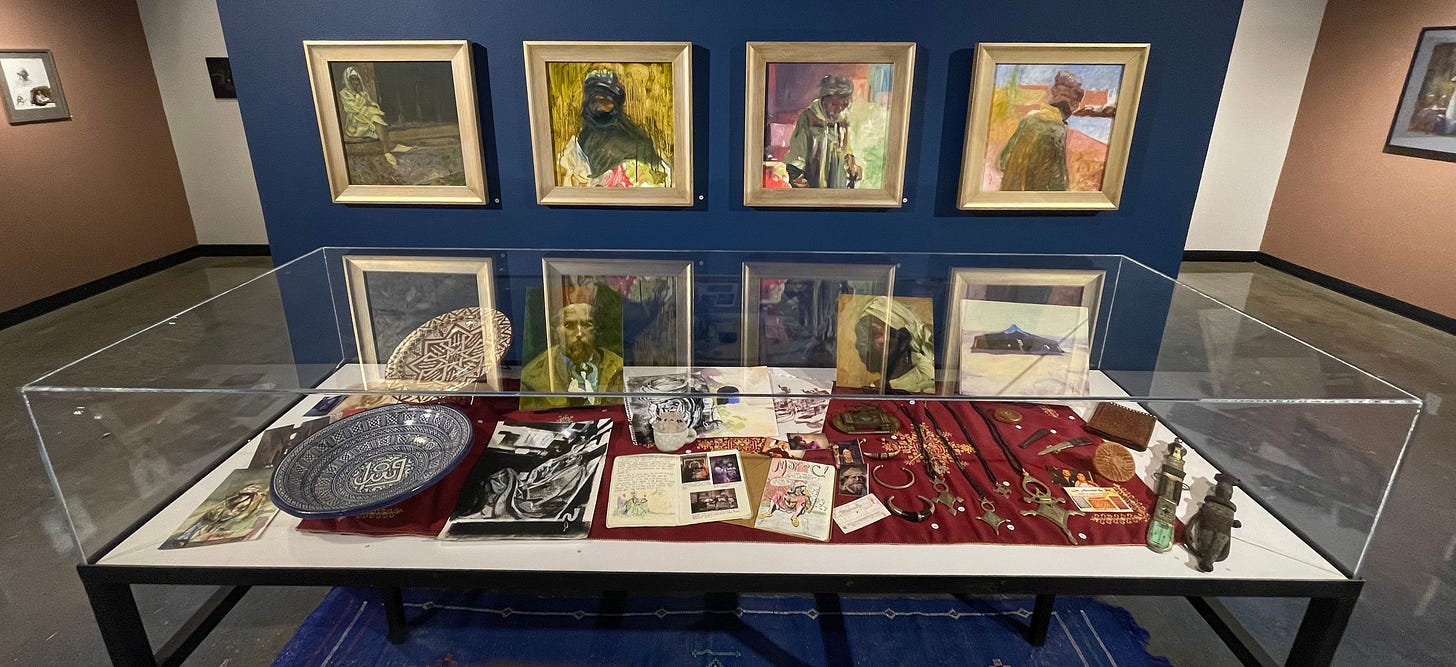
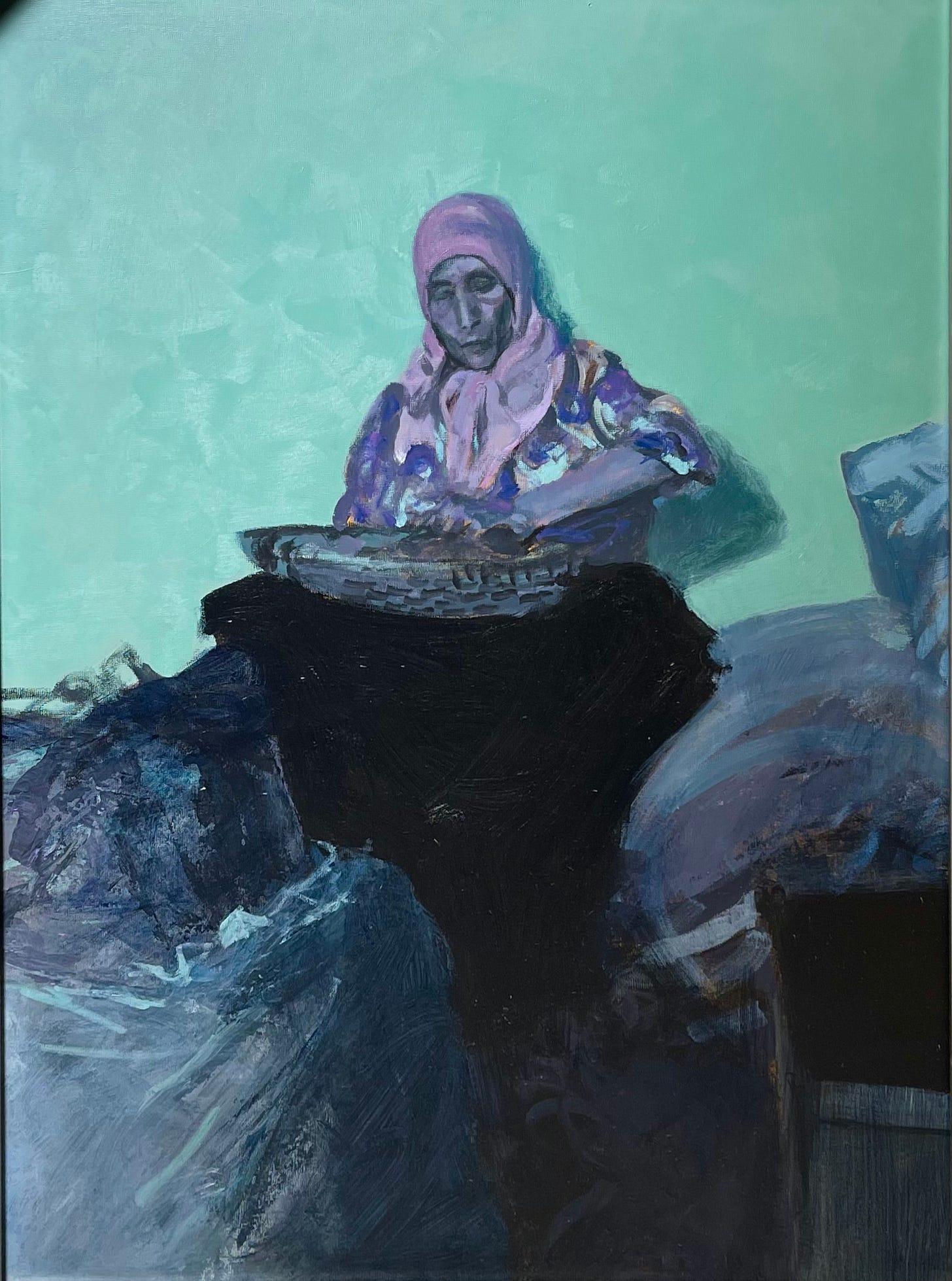
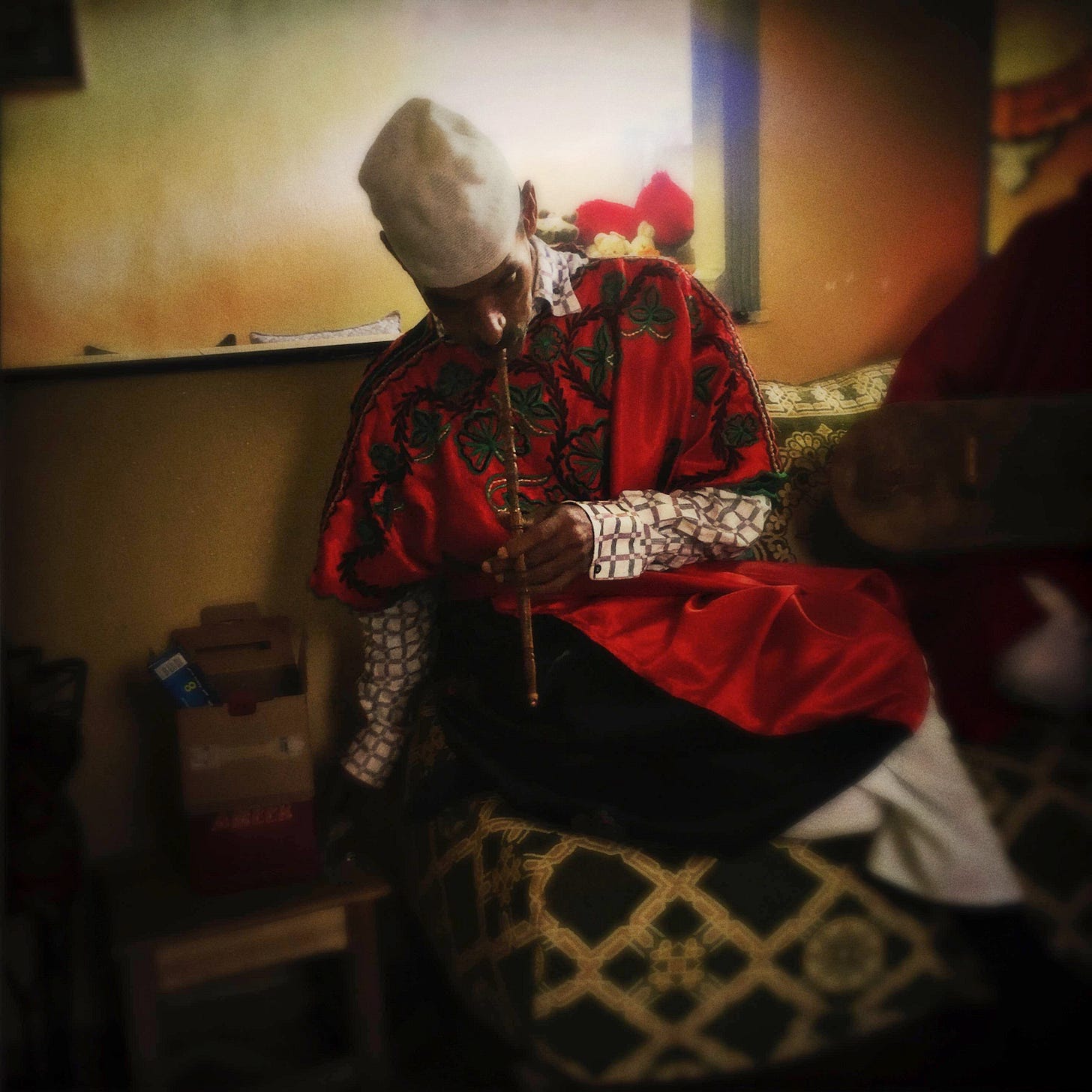
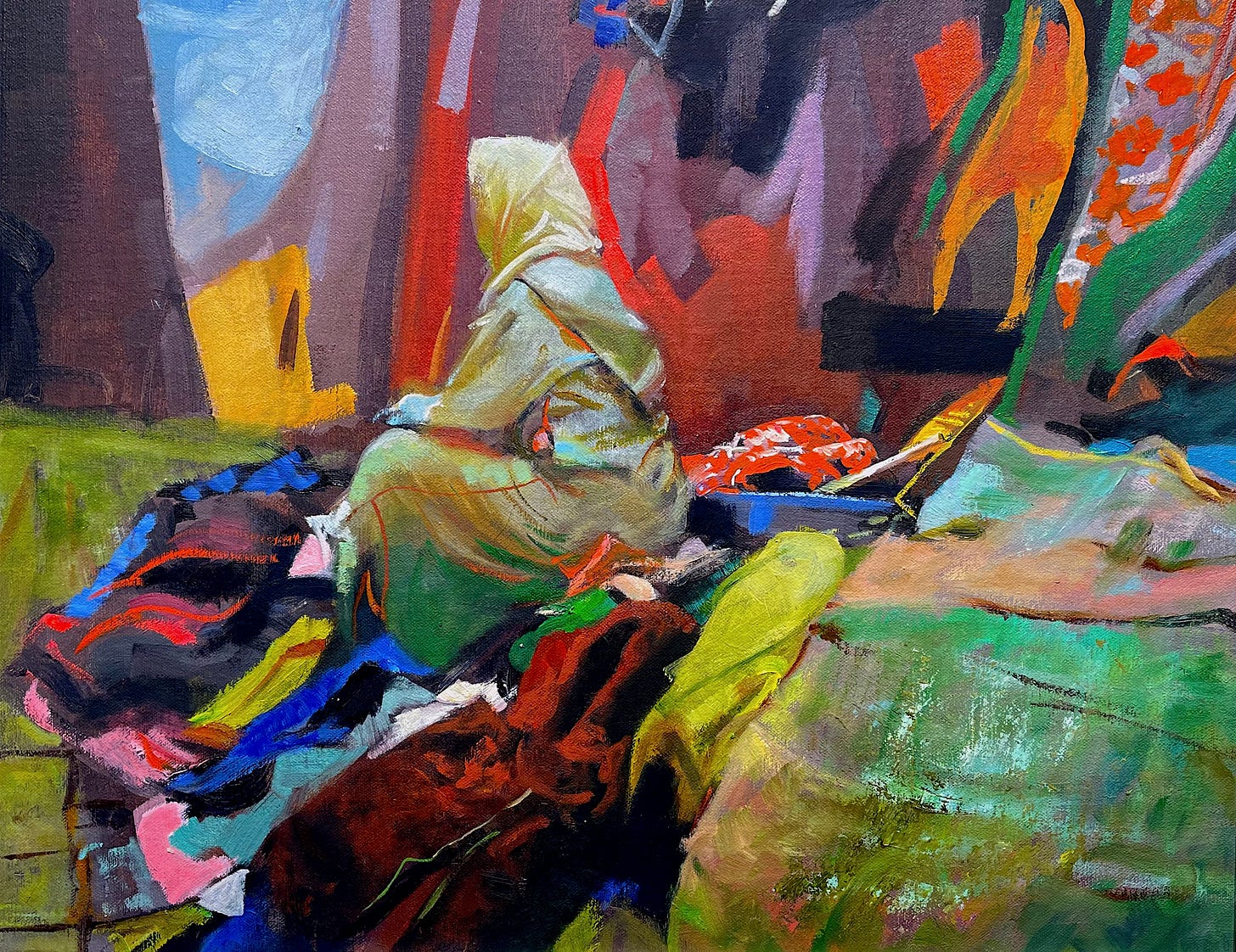

1 comment:
Thank you for introducing me to this artist. His work looks really wonderful. And the story of his trip is enlightening and captivating.
Post a Comment